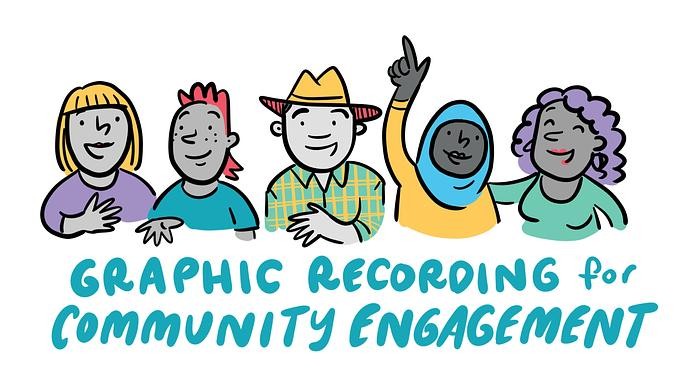Is Graphic Recording your secret weapon for Community Engagement projects?
In the 12+ years I’ve been working as a graphic recorder, one of the most valuable applications of graphic recording I’ve seen is within community engagement work.
This could be dreaming up the future with local councils, deciding how buildings or spaces should be used, gathering feedback on the efficacy of existing programs, or working with young people to improve the system that’s meant to support them… and infinite things in between!
So, why is it so effective in a community engagement setting, and how might you use it?
- It allows people to see they’ve been heard. When asking for input from a community, you can bet your bottom dollar participants are coming with an agenda. As they should! When there are multiple, potentially conflicting agendas or opinions, it’s really important that participants can see they’ve been heard and that their input has been recorded – front and centre, in real time.
- It helps the flow of conversation. By providing this immediate visual confirmation that participants’ ideas have been heard and captured, it allows for conversation to continue flowing without getting stuck in loops with participants who are particularly vocal or passionate and concerned their input will be lost. It also encourages participants to build on each other’s ideas rather than duplicate them.
- It creates a common understanding. Seeing the collated ideas of all participants on one page gives the group a clear and common understanding of the landscape they’re working in, and seeing it unfold in real-time creates a sense of collective ownership over the final output.
- It can be built on over multiple sessions. If you are running sessions with multiple groups, you may choose to build on the graphic recording with each session, rather than starting from a blank sheet. This can provide richer conversation with each subsequent session, encourages participation and evaluation of existing ideas, and creates space for new ones.
- It helps compare perspectives from multiple stakeholders. When working with multiple groups of different stakeholders (e.g. young people, residents, local business, policy makers, etc), graphic recording creates a visual snapshot that allows you to quickly identify patterns and contrasts between different community groups.
- It creates instant, engaging outputs. When we’re asking people to give us their time, they want to be sure that it’s been valuable. They want to see tangible outputs, and to know what’s happening next. Graphic recording creates beautiful artifacts to communicate results back to the community, stakeholders or funders in a really accessible and engaging way.
Interested in learning more about how graphic recording can help support your next community engagement project? Have a sticky beak around our website or shoot me an email any time.





